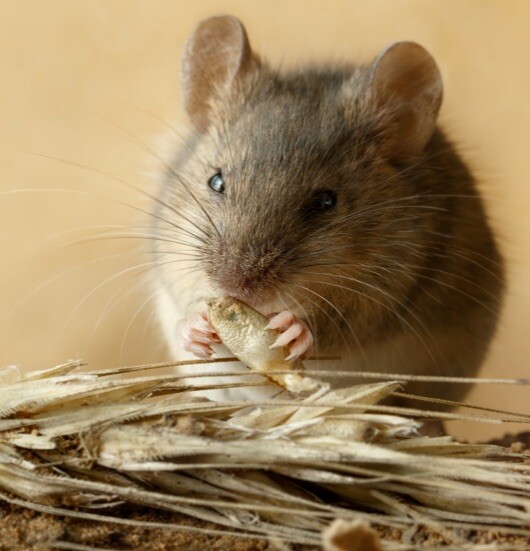Protecting your crops from mice damage
Mice are becoming a more persistent problem in the Riverine Plains, with monitoring, on-farm hygiene, and integrated management the keys to success.

Key messages
- Mice and rats have become a more persistent problem over the past few years
- Monitoring is key to understanding the scale of the problem and helps indicate when additional control is required
- Timing mouse bait application is critical to protecting crops when populations are high.
Mice populations have traditionally followed a boom-and-bust type pattern, however over the last decade or so they have become a more persistent problem.
It’s likely that modern farming systems (i.e., no-till, stubble retention) are contributing to this change, with increased levels of stubble cover and grain residue acting to extend the breeding season.
While mice are always present in crops, high crop yields and stubble loads, summer and autumn rainfall (which causes weeds to germinate and set seed), along with ideal burrowing conditions can increase food supply and the amount of shelter available. This can lead to rapid population increases under the right conditions, which can result in crop damage anytime from sowing through to harvest.
As well as the physical damage to growing crops, mice can also spread disease, damage livestock feed and stored fodder or contaminate stored grain. And they invade our living spaces!
Once numbers are high, mice can become very difficult and costly to manage, so keeping populations in-check early can pay off in the longer term.
Monitoring
Monitoring prior to sowing (March to April) and in early spring (September to October) is key to identifying whether there any significant increases or decreases in the population and whether additional chemical control is needed.
Numbers are usually highest in late autumn, towards the end of the breeding season. Chew cards and active burrow counts will help determine the scale of the problem. The Grains Research and Development Corporation provide information on monitoring techniques and thresholds.
An integrated approach to reducing mice numbers
It’s important to maintain paddock and farm hygiene practices all year round by controlling weeds and volunteer crops, as these provide shelter and a feed source for mice. This includes fence lines and channels or other areas where seed set can occur.
Grain residues are a high-quality feed source for mice. Minimise grain residues at harvest by harvesting before crops become over-ripe (to reduce shattering) and ensure harvester settings minimise losses. Consider using livestock to graze residues and stubble to reduce the feed source, while taking care to leave enough ground cover to prevent erosion. Rolling stubble can also help expose mice to other predators, while seed destructors can further reduce their feed supply.
Grain and fodder storage areas often attract mice, so try to keep these areas as clean and as secure as possible. Clean up spills and bait regularly to avoid population build ups.
Practice good agronomy at sowing by aiming to sow as evenly and as early as possible (within the correct sowing window for the crop) to ensure rapid plant establishment. When mouse populations are high, avoid dry sowing because this delays establishment and leaves seeds exposed to greater levels of damage.
If numbers are high ahead of sowing, consider slightly increasing seeding rates and sowing as deeply as possible to compensate for losses. Mice and other pests tend to follow drill rows, and cross-harrowing or rolling after sowing can enhance seed coverage and remove sowing lines.
Cultural controls alone may not be effective in preventing population build ups and chemical control may be required.
Chemical control
Where there is sufficient evidence of mouse activity, grain growers should aim to bait six weeks before sowing. If only baiting once, it’s important to apply bait at sowing, or within 24 hours, as there is an increased chance of the bait being taken before the buried seed is found (mice forage more after soil disturbance). Delays of four to five days in baiting can give mice extra time to find freshly sown seed, which cause seed losses of up to 5% each night when populations are high.
Re-bait through the season as needed, allowing four to six weeks before reapplication to avoid bait aversion. Also consider coordinating baiting activities with neighbours to increase the area treated and the effectiveness of the operation.
Zinc phosphide bait is currently the only rodenticide registered for in-crop use. Only apply bait in accordance with the label and at the prescribed rate and be aware of any livestock or harvest withholding periods, especially if applying in spring. Contact your agronomist or agricultural supplier for further information on the formulations available.
Resources and further reading
- Control now a year round activity
- Tips and tactics for better mouse management
- Mouse alert
- Fears for a new mouse plague across three states
Author
NEWS
Keep up to date with the latest news from across the Riverine Plains.
-
Livestock
-
People
-
Grains
-
Sustainability

